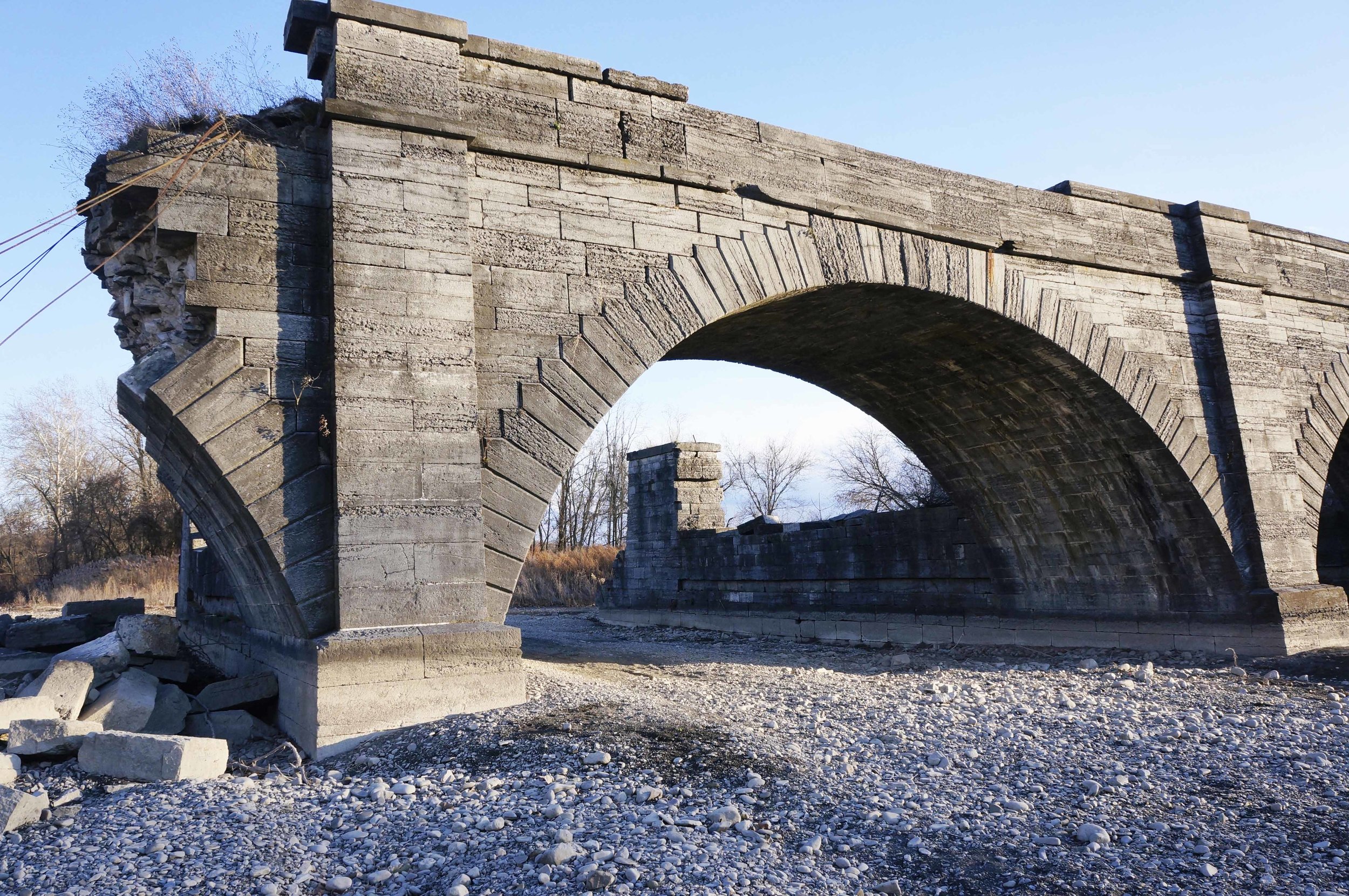Protecting the Erie Canal Legacy
In July, 1817, workers broke ground for the Erie Canal in Rome, NY. From the opening of the Canal through the mid-20th century, companies constructed headquarters, warehouses, mills, manufacturing and utility buildings to support leading industries. Worker housing and stately homes for business owners followed – as the song says – from Albany to Buffalo.
The Schoharie Aqueduct in Montgomery County was included on our 2018-19 Seven to Save list.
The boom years also left their mark in other solid, handsome buildings and downtowns: opera houses, schools, churches, and Main Streets. But canal and railroad traffic waned, the New York State Thruway bypassed canal communities, manufacturing abandoned upstate New York, and massive industrial buildings were left vacant. Communities lost jobs, then residents, and finally their Main Streets went dark.
Now, interest in the Erie Canal as an engine for recreation and tourism is on the upswing, and the Preservation League is helping communities in the Erie Canal Corridor address their unique preservation challenges. Through more than $600,000 in grants, technical services, workshops, and our Excellence
Awards, the Preservation League has helped individuals, nonprofits and municipalities revitalize their canalside assets. Loans from our Endangered Properties Intervention Program have added more than $300,000 in support.
In 2015, the Seneca Falls Historical Society secured a $3,000 Technical Assistance Grant to support the cost of a condition survey of the 1855 Mynderse/Partridge/Becker House
The League forged a strategic relationship with the Erie Canalway National Heritage Corridor starting with the Industrial Heritage Reuse Project in 2014. We piloted a program to create development and rehabilitation plans for selected buildings in the Canal Corridor, to illustrate the potential of the sites and to celebrate their host communities’ history. The project was supported by the J.M. Kaplan Fund with additional assistance from the Erie Canalway National Heritage Corridor.
The Heritage Corridor also worked to facilitate reinvestment in historic buildings and infrastructure by providing additional financial support to the Technical Assistance Grant Program, a partnership program of the New York State Council on the Arts and the League.
These are just a few examples of how the Preservation League has played a role in fostering, enhancing or celebrating New York’s historic resources along the Erie Canal. We hope that as you join us in marking its bicentennial, you’ll take note of the nearby towns and villages that grew, declined and are being reborn alongside the Canal.
With your support, the League will continue our work in cities, towns, and rural communities – along the Erie Canal, and across the Empire State – so our past has a future.
This table details the projects along the canalway that the League has supported.
Abbreviations: Endangered Properties Intervention Program (EPIP) / Preserve New York Grants (PNY) / Technical Assistance Grants (TAG)


